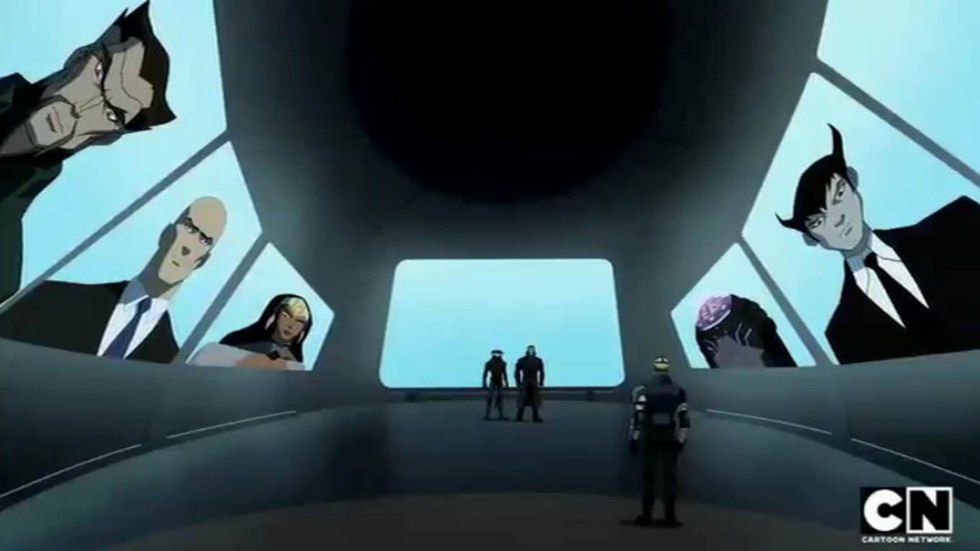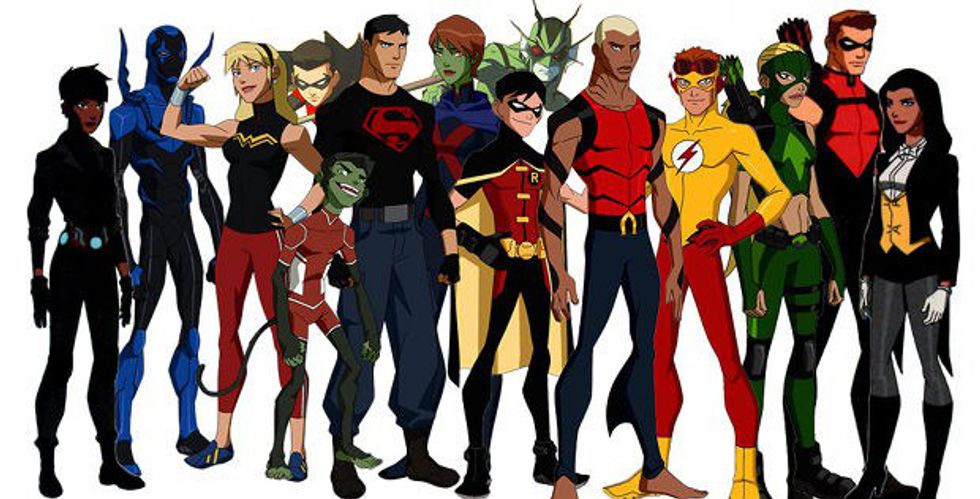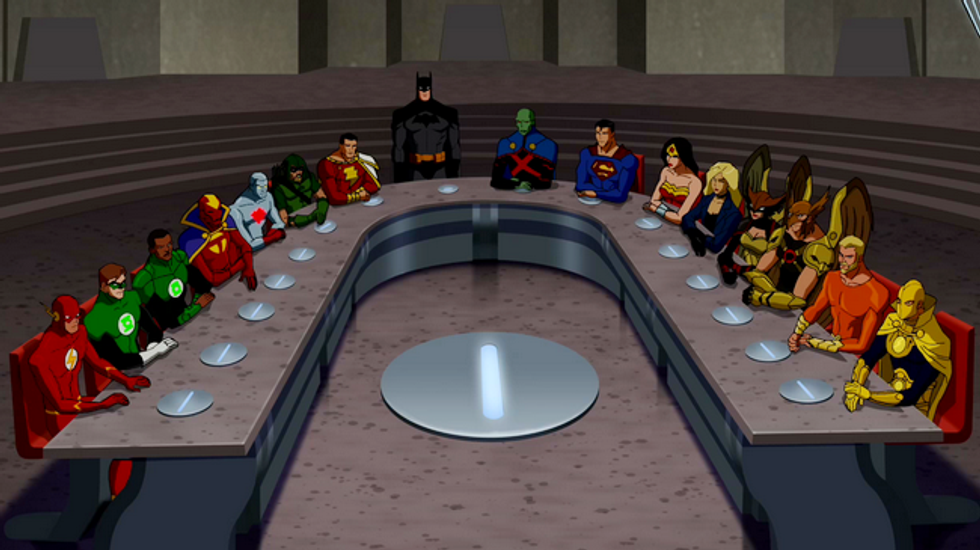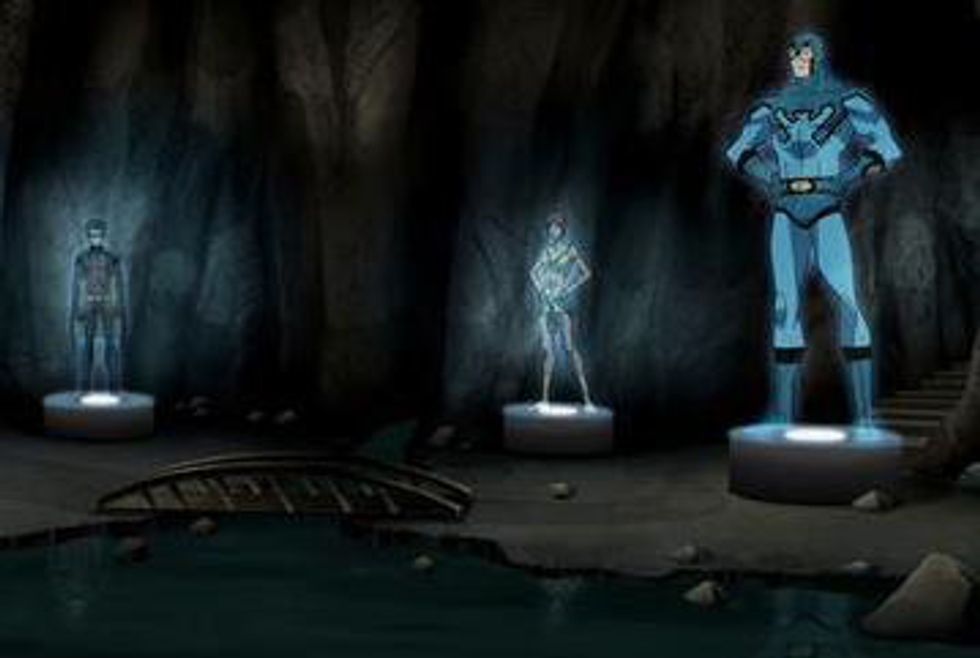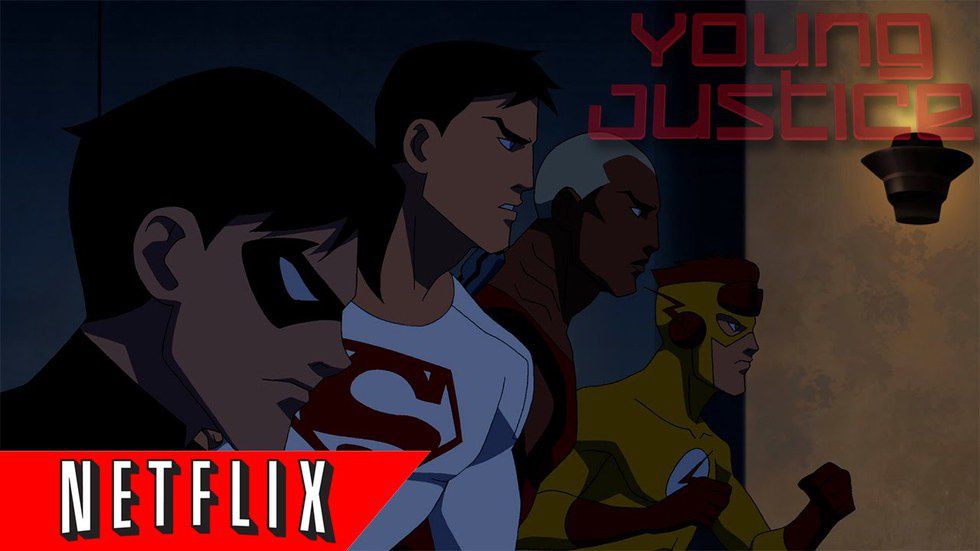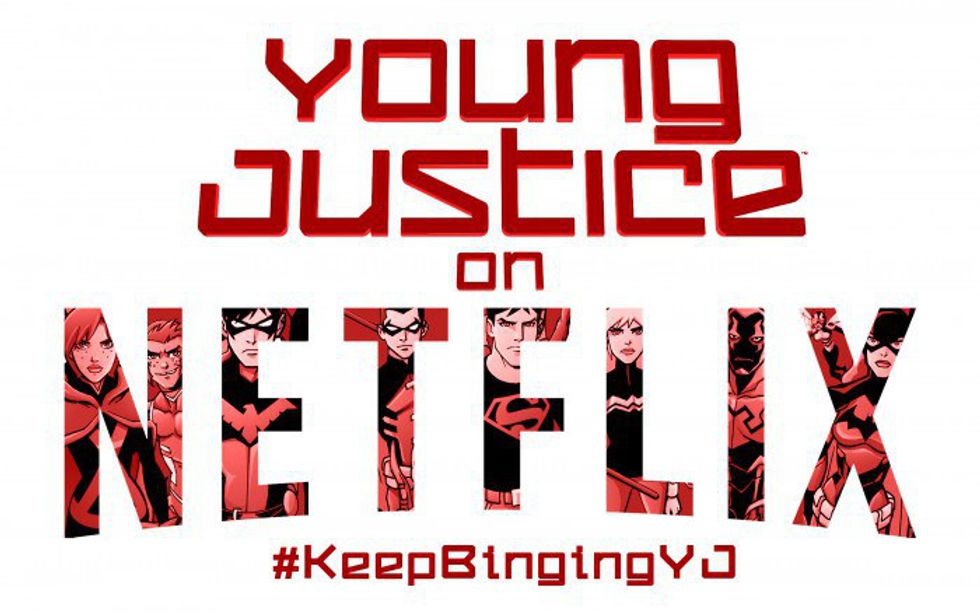For those who don't know, "Young Justice" was a show previously aired on Cartoon Network, and one of the channel's finest masterpieces. Unfortunately, it was cancelled, due to reasons that are unknown (although it's been suggested that mostly female viewership or failure to sell toys related with the show are possible causes).
"Young Justice" revolved around the lives of sidekicks of the Justice League, who were tired of letting their mentors handle every big crisis. With Batman's approval, they formed a black-ops team working for the league. This team would deal with more covert missions behind the scenes, while still learning how to solve problems on their own.
The team's line-up in season 1 was Robin, Kid Flash, Aqualad, Superboy, Miss Martian, Artemis, and Zatanna. Every hero had their own set of problems to deal with, both in their crimefighting and normal lives. The show also featured "The Light", a dynamic organization of villains secretly working together to take down the team and the Justice League for their own ends.
In season 2, the show jumped five years into the future, when the main cast was grown up. Zatanna joined the Justice League, but Miss Martian, Superboy, and Robin, now Nightwing, had remained with the black ops team to lead the newer additions. Artemis and Kid Flash, however, made the decision to leave crimefighting behind in order to lead normal, healthy lives. This season focused on the changes the characters underwent and the people they lost, as well as the various struggles of the newer members of the black ops team (such as the third Robin (Tim Drake), Blue Beetle, Impulse, and Beast Boy).
So why should you be watching a show that was ended after only two seasons? Oh, there's a lot of good reasons.
1. It passes the Bechdel Test with flying colors.![]()
![]()
![]()
Two female characters? Check. Talking about something other than a man? Check. M'Gann's storyline also passes the Mako Mori Test, as it revolves around her acceptance of her powers and her true appearance, rather than her relationship with Superboy.
2. It asks more serious questions about morality than most cartoons do.
3. It has the best slang.
4. The relationship between Artemis and Kid Flash is pure gold.![]()
![]()
![]()
![]()
![]()
Robin only said what we were all thinking.
5. It includes Billy Batson, aka Captain Marvel and national treasure.![]()
Billy Batson is a ten year-old boy who was given the ability to transform into Captain Marvel, a man with godlike powers, by simply saying the word "SHAZAM!" This word also transforms him back into a boy. It stands for: the wisdom of Solomon, the strength of Hercules, the courage of Achilles, the power of Zeus, the stamina of Atlas, and the speed of Mercury.
Despite the fact that Billy is only a kid, he still holds a spot on the Justice League, even after they learn of his true age.He might be young, but he's got an amazing heart to help others. Plus, the hilarious antics he gets up to as Captain Marvel confound the team, as they initially think he's an adult.
6. It also features a portrayal of Black Canary that puts the version in CW's Arrow to shame.
Not only can she beat Superboy, she doesn't even have to use her powers to do it. Besides training the team in combat, she also acts as a therapist when the heroes need help dealing with trauma. Simply put, she's a total badass that lives up to her comic book counterpart as an expert strategist, fighter, and one of the League's strongest members.
In "Arrow", Dinah Laurel Lance doesn't even become the Black Canary until the third season, and her training is minimal, making her technique poor She serves only as a way to back up Oliver's storyline, which is a pretty big waste of a good character. The writers on "Arrow" also made her more whiny instead of the strong, independent woman she's supposed to be.
"Young Justice"'s canary, however, definitely hit a high note.
7. The villains are actually clever and never reveal their full plan.
In each episode, the audience is only given the piece of a larger puzzle, which keeps growing. It's not until the very last episode that we're given a look at the Light's real agenda (and their terrifying ally).
And even when the heroes save the day, the Light still manages to have the upper hand, always coming up with contingencies and back-ups. They also make a point not to ramble on about their goals unless they're doing so to lull someone into a false sense of security.
8. The show does a good job of creating well-developed diverse characters.
Aqualad, Rocket, Static, and Bumblebee are African-American, Blue Beetle is Hispanic, and Artemis (along with her sister) is half-Vietnamese. And that's only skimming the surface. There's also the Japanese and Native American characters. Each one has a well-thought out, complex storyline, none of which revolve around their ethnicities. I think that's important to note.
9. And where else can you see four Flashes in one room?
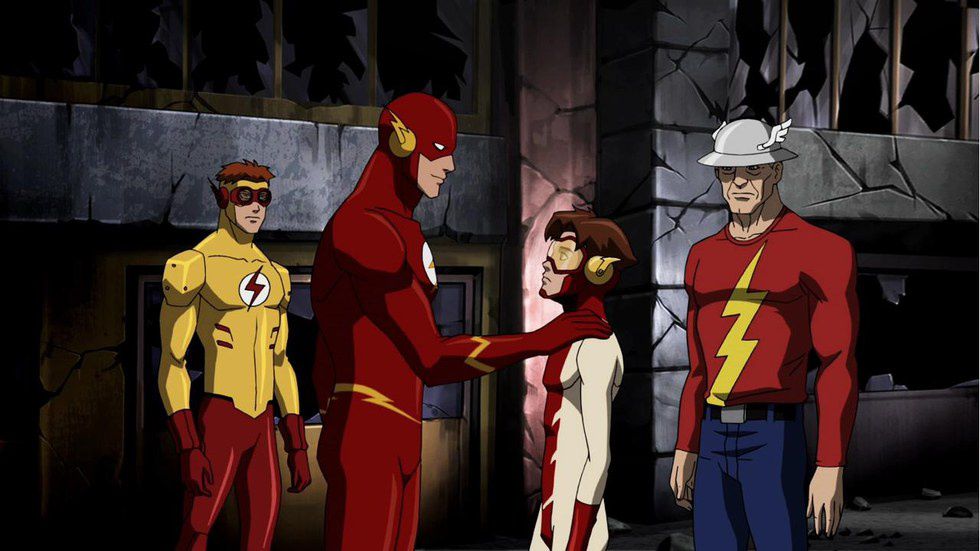
10. It lets us in on how the Justice League actually works when they're NOT out fighting villains.
In the episode "Agendas", we get an important look at how the League nominates and votes on new members. We get to learn more about what they're looking for and what each of them values. They spend time debating various qualifications; age, experience, temperament, etcetera (Wonder Woman also points out that the League needs more female members).
Also, "Young Justice" establishes that the League has a rotating chairmanship. During Season 1, it's run by Batman. In Season 2, it's run by Captain Atom, until he decides to transfer leadership to Black Canary.
While I love watching the League kick butt, it's also cool to see how the politics and organization of this group fit together. Most superhero shows only focus on how the League works in battle, not behind-the-scenes.
11. The show doesn't shy away from the topic of death.
In fact, in season 2, the team has a memorial place for fallen heroes, complete with holograms and pedestals. If you look closely, one of them is the second Robin, Jason Todd (who probably would have become Red Hood, if the show had gone on long enough).
There's also an episode that pays tribute to Robin's past in the circus and the tragic death of his parents.
12. And the friendship between Kid Flash and Robin is basically legendary.![]()
"Are you going to Cadmus? 'Cause if you're going, I'm going."
These two heroes have known each other since before they even started the black ops team, and they always have each other's back . . . even if that means breaking into a genetics lab out of curiosity or going on a suicide mission against an alien invasion.
13. It also portrays a healthy father-son relationship between Batman and Robin.![]()
![]()
![]()
There's even a great scene where Bruce challenges Dick to a game of basketball, one-on-one, claiming that it's a good way to practice hand-eye coordination.
14. Every single episode of the show is on Netflix now . . .
15. . . . and if enough people watch the show, it may garner enough support for Netflix to create a third season.
In other words, get traught, feel the aster, crash the mode, and watch "Young Justice" now. Noted? Noted.
























